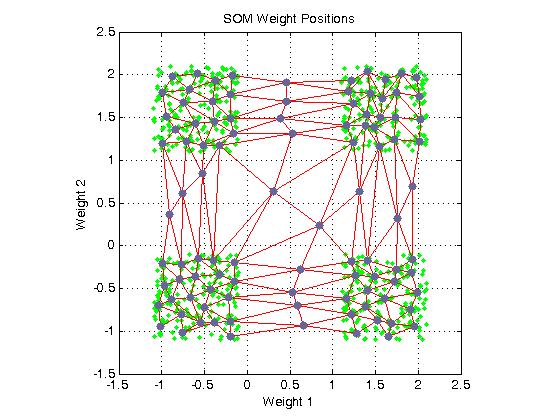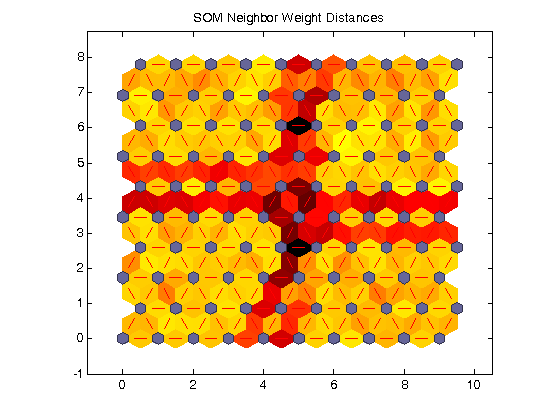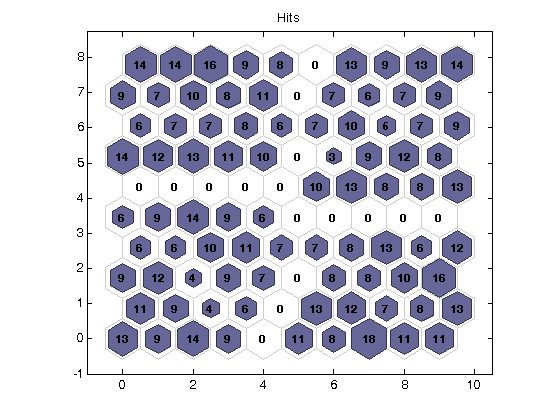1D and 2D Self Organized Map
Neural Networks course (practical examples) © 2012 Primoz Potocnik
PROBLEM DESCRIPTION: Define 1-dimensional and 2-dimensional SOM networks to represent the 2-dimensional input space.
Contents
Define 4 clusters of input data
close all, clear all, clc, format compact % number of samples of each cluster K = 200; % offset of classes q = 1.1; % define 4 clusters of input data P = [rand(1,K)-q rand(1,K)+q rand(1,K)+q rand(1,K)-q; rand(1,K)+q rand(1,K)+q rand(1,K)-q rand(1,K)-q]; % plot clusters plot(P(1,:),P(2,:),'g.') hold on grid on
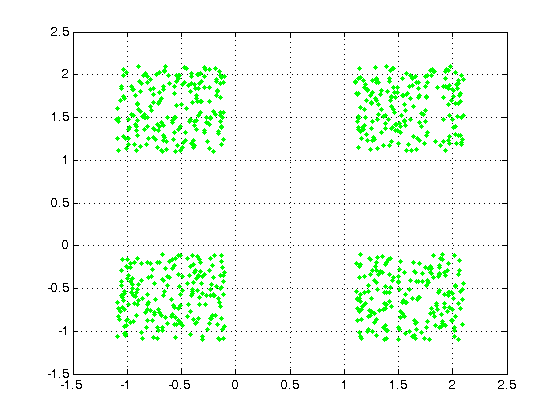
Create and train 1D-SOM
% SOM parameters dimensions = [100]; coverSteps = 100; initNeighbor = 10; topologyFcn = 'gridtop'; distanceFcn = 'linkdist'; % define net net1 = selforgmap(dimensions,coverSteps,initNeighbor,topologyFcn,distanceFcn); % train [net1,Y] = train(net1,P);
plot 1D-SOM results
% plot input data and SOM weight positions plotsompos(net1,P); grid on
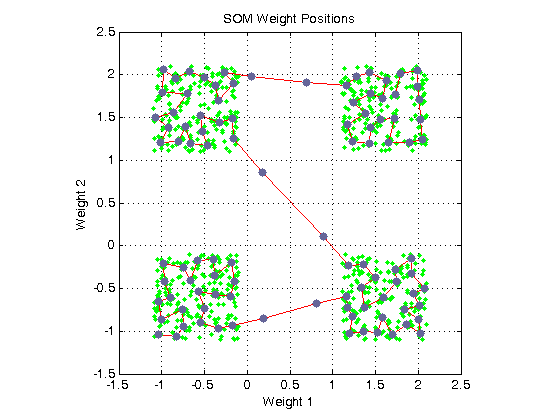
Create and train 2D-SOM
% SOM parameters dimensions = [10 10]; coverSteps = 100; initNeighbor = 4; topologyFcn = 'hextop'; distanceFcn = 'linkdist'; % define net net2 = selforgmap(dimensions,coverSteps,initNeighbor,topologyFcn,distanceFcn); % train [net2,Y] = train(net2,P);
plot 2D-SOM results
% plot input data and SOM weight positions plotsompos(net2,P); grid on % plot SOM neighbor distances plotsomnd(net2) % plot for each SOM neuron the number of input vectors that it classifies figure plotsomhits(net2,P)
